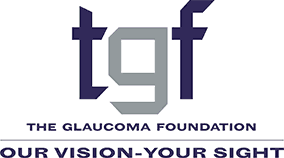
Elevated eye pressure, the primary known risk factor for glaucoma nerve damage, is caused by a buildup of fluid known as aqueous humor. In a healthy eye, this fluid provides nourishment to cells before flowing out into the bloodstream through a drainage system made up of the primary outflow pathway, the trabecular meshwork, and the smaller uveoscleral pathway. When the drainage system is blocked, increased intraocular pressure (IOP) can put a person at risk of developing glaucoma.
The mainstay first step to glaucoma therapy has been the use of eye drops that either decrease the production of the aqueous humor or improve the drainage of aqueous humor through the uveoscleral pathway or trabecular meshwork in order to stabilize the intraocular pressure and prevent damage to the optic nerve.
There are numerous classes of eye drops and patients may take a combination of medications. These include prostaglandin analogs, beta blockers, alpha agonists, carbolic anhydrase inhibitors, and rho kinase inhibitors. Combination drugs are available for those who require more than one type of medication and numerous are available in generic form.
Prostaglandin analogs include Xalatan® (latanoprost), Lumigan® (bimatoprost), Travatan Z® (Travoprost), and Zioptan™ (tafluprost). They work by increasing the outflow of fluid from the eye.
Vyzulta, one of two new FDA-approved medications in 2018, works to lower intraocular pressure by opening the uveoscleral pathway much like other prostaglandin analogs. But another component of the drug is a nitric oxide donator which relaxes trabecular meshwork cells. Recent research has shown that an insufficient blood supply to the optic nerve may also contribute to the onset of glaucoma.
Beta blockers such as Timoptic® or Istalol® (timolol) and Betoptic® S (betaxolol) are the second most often used class of medication and work by decreasing production of fluid.
Alpha agonists [Alphagan®P (brimonidine), Lopidine® (apracionidine)] work to both decrease production of fluid and increase drainage.
Carbonic anhydrase inhibitors (CAIs) reduce eye pressure by decreasing the production of intraocular fluid. These are available as eye drops [Trusopt® (dorzolamide), Azopt® (brinzolamide)] as well as pills [Diamox (acetazolamide) and Neptazane® (methazolamide)].
Rho khinase inhibitors [Rhopressa® (netarsudil)], the second new class of medications, expands treatment options. Netarsudil is the first agent in the ROCK inhibitor class to be approved by the Food and Drug Administration for use in glaucoma and ocular hypertension.
Rhopressa reduces IOP specifically by improving outflow of the trabecular meshwork, a pathway from which most of the aqueous humor drains. Most other eye drops commonly used today target only the secondary drainage system, the uveoscleral pathway, or reduce aqueous production. In addition, Rhopressa also has an advantage in treating normal tension glaucoma, which results in damage to the optic nerve despite only slight elevations in intraocular pressure.
Your physician may change your medication prescriptions when they do not achieve the desired results or to reduce side effects they may cause. Still, they are key to controlling your eye pressure and keeping your vision.
